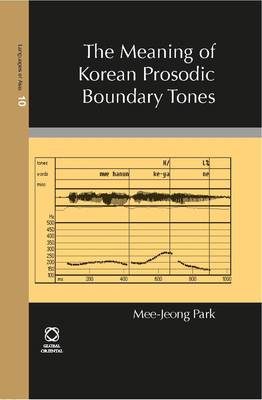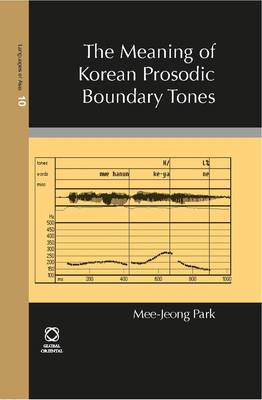
- Afhalen na 1 uur in een winkel met voorraad
- Gratis thuislevering in België vanaf € 30
- Ruim aanbod met 7 miljoen producten
- Afhalen na 1 uur in een winkel met voorraad
- Gratis thuislevering in België vanaf € 30
- Ruim aanbod met 7 miljoen producten
Zoeken
Omschrijving
This book marks the first attempt to rationalise the meaning of Korean intonation, especially its boundary tones. Unlike other languages where various pragmatic and discourse meanings are delivered through the types of pitch accent (prominent pitch movement on stressed syllable) and the types of phrase-final boundary tones, Korean delivers the pragmatic/discourse meaning mainly by the types of phrase-final boundary tones. This is possible because Korean has at least nine boundary tones while other languages have two (or, even four or five if the boundary tone of a smaller phrase are included). Various examples are given that illustrate this three-way relationship, i.e., a specific meaning delivered by a certain type of boundary tone and a certain type of morphological marker in natural conversation.
Specificaties
Betrokkenen
- Auteur(s):
- Uitgeverij:
Inhoud
- Aantal bladzijden:
- 310
- Taal:
- Engels
- Reeks:
- Reeksnummer:
- nr. 10
Eigenschappen
- Productcode (EAN):
- 9789004243576
- Verschijningsdatum:
- 28/11/2012
- Uitvoering:
- Hardcover
- Formaat:
- Genaaid
- Afmetingen:
- 145 mm x 218 mm
- Gewicht:
- 521 g

Alleen bij Standaard Boekhandel
+ 573 punten op je klantenkaart van Standaard Boekhandel
Beoordelingen
We publiceren alleen reviews die voldoen aan de voorwaarden voor reviews. Bekijk onze voorwaarden voor reviews.








